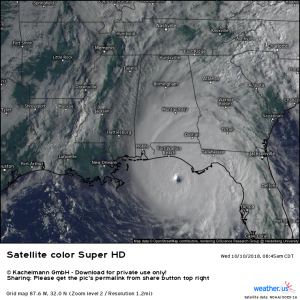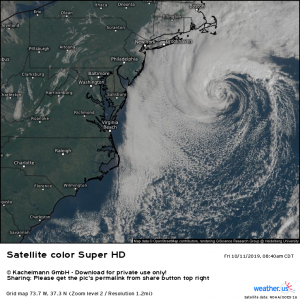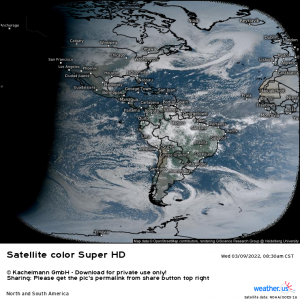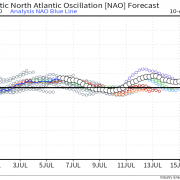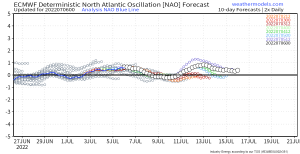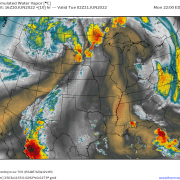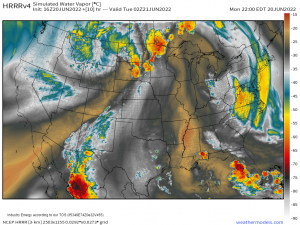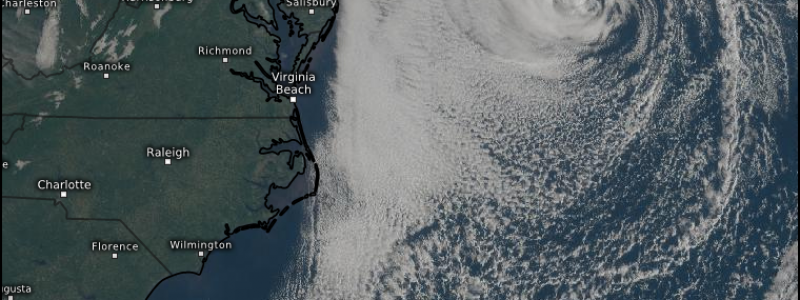
Concerning Cyclones
Tropical Cyclones, Sub-Tropical Cyclones, Extra-Tropical Cyclones – what’s the difference? They’re all swirly areas of low pressure with wind and rain, right? Well, yes, but there are distinct differences that set them apart from each other.
You’ll hear these terms much more frequently now that we’re edging toward the official start to the Atlantic Basin Hurricane Season, so today we’ll take a look at what classifies a storm as one of the three. All the satellite images we use will be pulled from the weather.us database found here.
Tropical Cyclone
(Hurricane Michael – Oct 10, 2018)
Definition:
- intense storm that originates over warm/tropical oceans
- warm core system
- forms at 5 degrees N latitude or higher
- characterized by low pressure
- winds exceed 74 mph
Characteristics:
- Circular storms
- Fairly compact – average of ~200 mi in diameter
- Rotates counterclockwise (northern hemisphere)
- Winds driven by lowering pressure
- Requires pre-existing disturbance with sufficient convergence
- Requires SSTs of 26.5 degrees C (80 degrees F) to a depth of 50 meters (150 feet) to fuel it
- Requires vertical shear of 10 m/s-1 or less to strengthen. Strong shear will tilt the circulation and destroy the storm.
- Requires moist air. Dry air destroys the storm.
- Distinct regions:
- Outer Squall Line – fairly straight gusty line of showers/storms 50+ miles ahead of the storm
- Outer Convective Bands – usually 2-5 in number, made of showers/storms. Winds increase as distance to the center decreases.
- Rain Shield – heavy rain and increasing winds. Commonly tropical storm force/hurricane force sustained winds here.
- Eyewall – intense convection surrounding the eye. Most intense winds and rains are found here.
- Eye – circular center of the tropical cyclone. Typically mostly clear/clear with light winds and no rain. Lowest pressure is found here.
- Strengthens over warm waters, weakens/dissipates over land
Subtropical Cyclones
(Subtropical Cyclone Melissa – October 11, 2019)
Definition:
- Characteristics of both tropical and extratropical cyclones – a hybrid storm
- form from extratropical cyclones
- a cold core system becomes cut-off from the flow in more favorable conditions for development of convection (SSTs at least 20 degrees C (68 degrees F) required)
- warm core
Characteristics
- Convection near the warm core center
- initial convection warms the core/adds moisture allowing for subtropical cyclogenesis
- Have a wider wind field – maximum winds extend much further from the center than they do in a tropical cyclone
- Colder temperatures aloft than tropical cyclones
- Can be sustained by lower SSTs than tropical cyclones – generally 24 degrees C (75 degrees F)
- Can form at higher latitudes than tropical cyclones
- Common in the North Atlantic
A little history: Subtropical cyclones were not recognized by the NHC until 1972. They also were not given names until 2002.
Extratropical Cyclones
(Extratropical Cyclone in the North Atlantic – March 9, 2022)
Definition:
- Also known as a mid-latitude cyclone
- Large-scale low pressure system
- Drives much of the weather on Earth
- Cold core
Characteristics:
- Occurs between 30 degrees and 60 degrees latitude
- Produces a variety of weather
- showers
- gales
- thunderstorms
- snowstorms
- tornadoes
- Possesses both a warm front and a cold front
- Rapid changes in temperature/dewpoint along its fronts
- Cyclogenesis occurs along baroclinic zones (areas of sharp temp/dewpoint gradients) with divergence aloft
Fun Fact: tropical cyclones that leave the tropics, lose all tropical characteristics, and transition into extratropical cyclones are usually called Post-tropical Cyclones.
I hope you enjoyed my brief dive into the difference between types of cyclones – and I hope you learned something too!
As always, if you want to know more about a certain subject, feel free to tweet the idea at me and I’ll see where I can work it in in our blogs!
